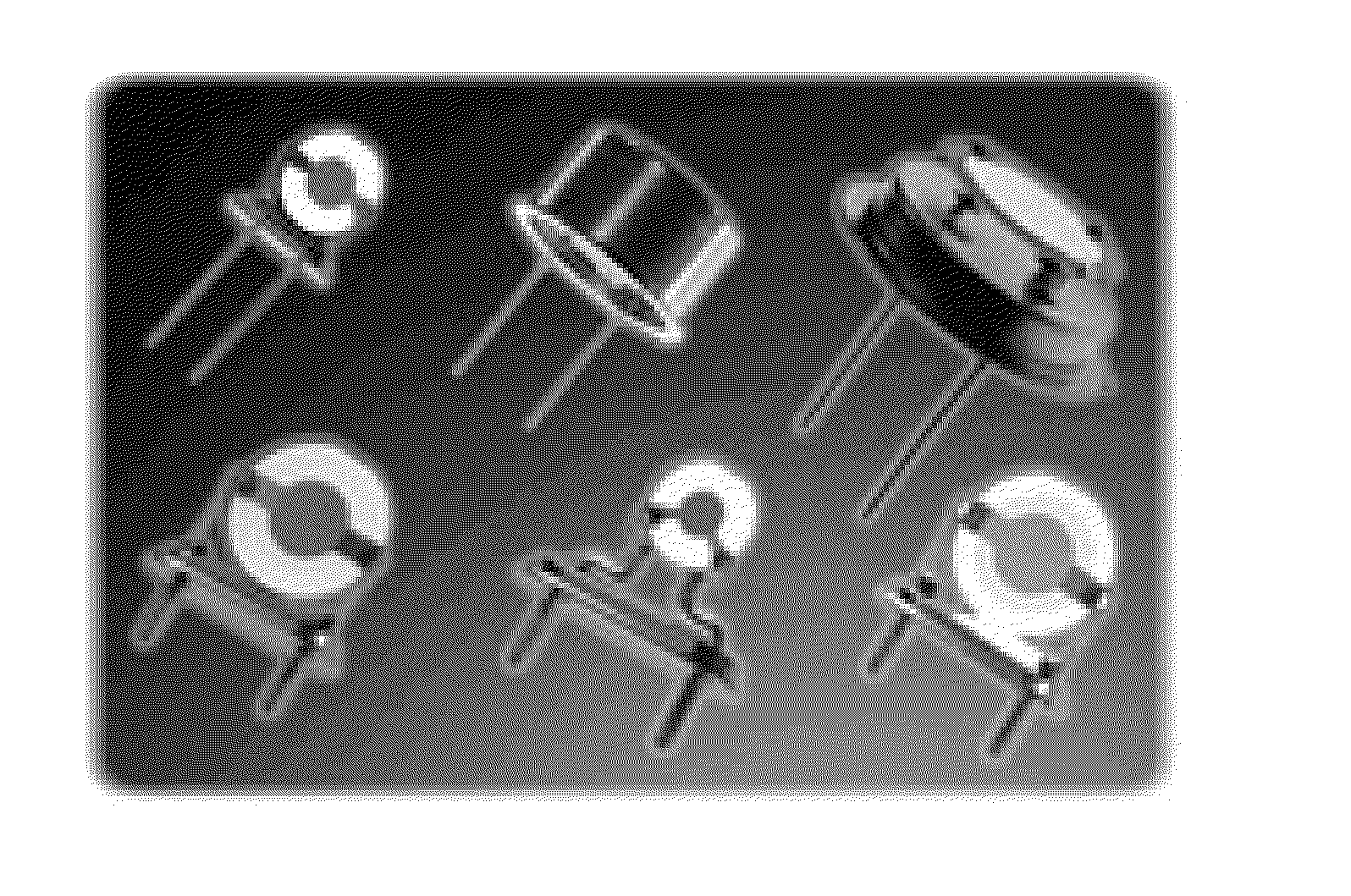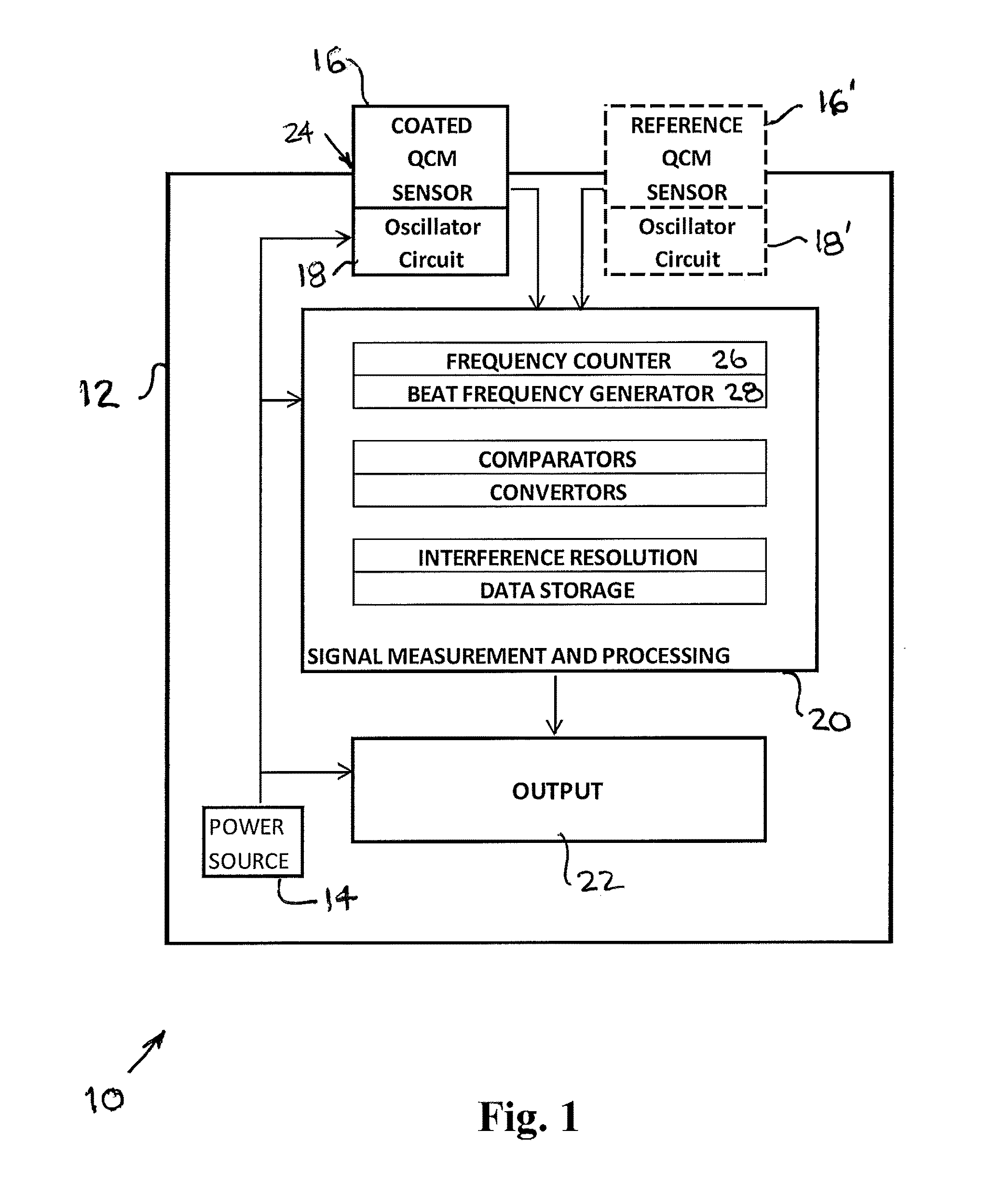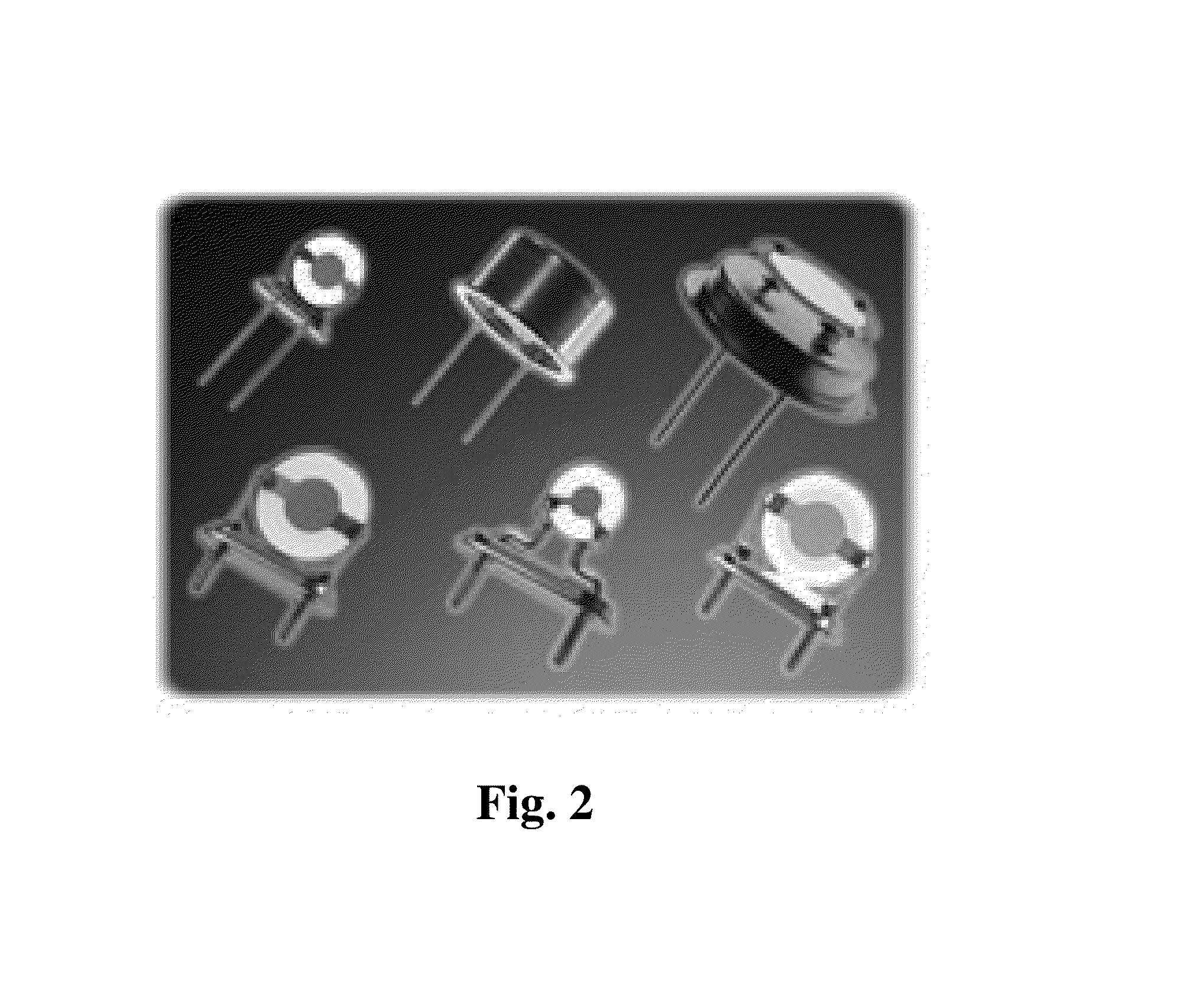Method and Device for Detecting Odorants in Hydrocarbon Gases
a technology of hydrocarbon gas and odorant, which is applied in the field of detecting ordorants added to hydrocarbon gases, can solve the problems of reducing the ability to detect leakage, odorant may be chemically oxidized, and a significant number of people who smell is not a reliable indicator of odorant level, so as to increase the surface area of the coating
- Summary
- Abstract
- Description
- Claims
- Application Information
AI Technical Summary
Benefits of technology
Problems solved by technology
Method used
Image
Examples
Embodiment Construction
[0040]Unless defined otherwise, all technical and scientific terms used herein have the same meaning as commonly understood by one of ordinary skill in the art to which the invention belongs. All references cited herein, including books, journal articles, published U.S. or foreign patent applications, issued U.S. or foreign patents, and any other references, are each incorporated by reference in their entireties, including all data, tables, figures, and text presented in the cited references.
[0041]In the drawings, the thickness of the lines, layers, and regions may be exaggerated for clarity.
[0042]Unless otherwise indicated, all numbers expressing ranges of magnitudes, such as angular degrees, percentages, quantities of ingredients, properties such as molecular weight, reaction conditions, and so forth as used in the specification and claims are to be understood as being modified in all instances by the term “about.” This is due, in large part, to the fact that numerical values inhe...
PUM
| Property | Measurement | Unit |
|---|---|---|
| solubility | aaaaa | aaaaa |
| boiling point | aaaaa | aaaaa |
| frequency constant | aaaaa | aaaaa |
Abstract
Description
Claims
Application Information
 Login to View More
Login to View More - R&D
- Intellectual Property
- Life Sciences
- Materials
- Tech Scout
- Unparalleled Data Quality
- Higher Quality Content
- 60% Fewer Hallucinations
Browse by: Latest US Patents, China's latest patents, Technical Efficacy Thesaurus, Application Domain, Technology Topic, Popular Technical Reports.
© 2025 PatSnap. All rights reserved.Legal|Privacy policy|Modern Slavery Act Transparency Statement|Sitemap|About US| Contact US: help@patsnap.com



